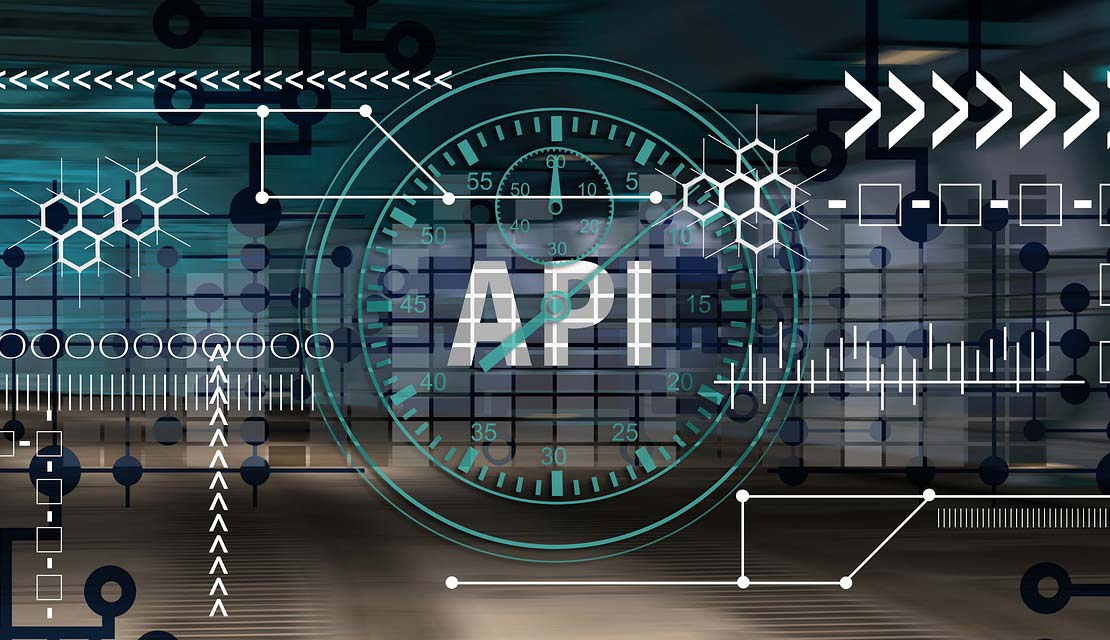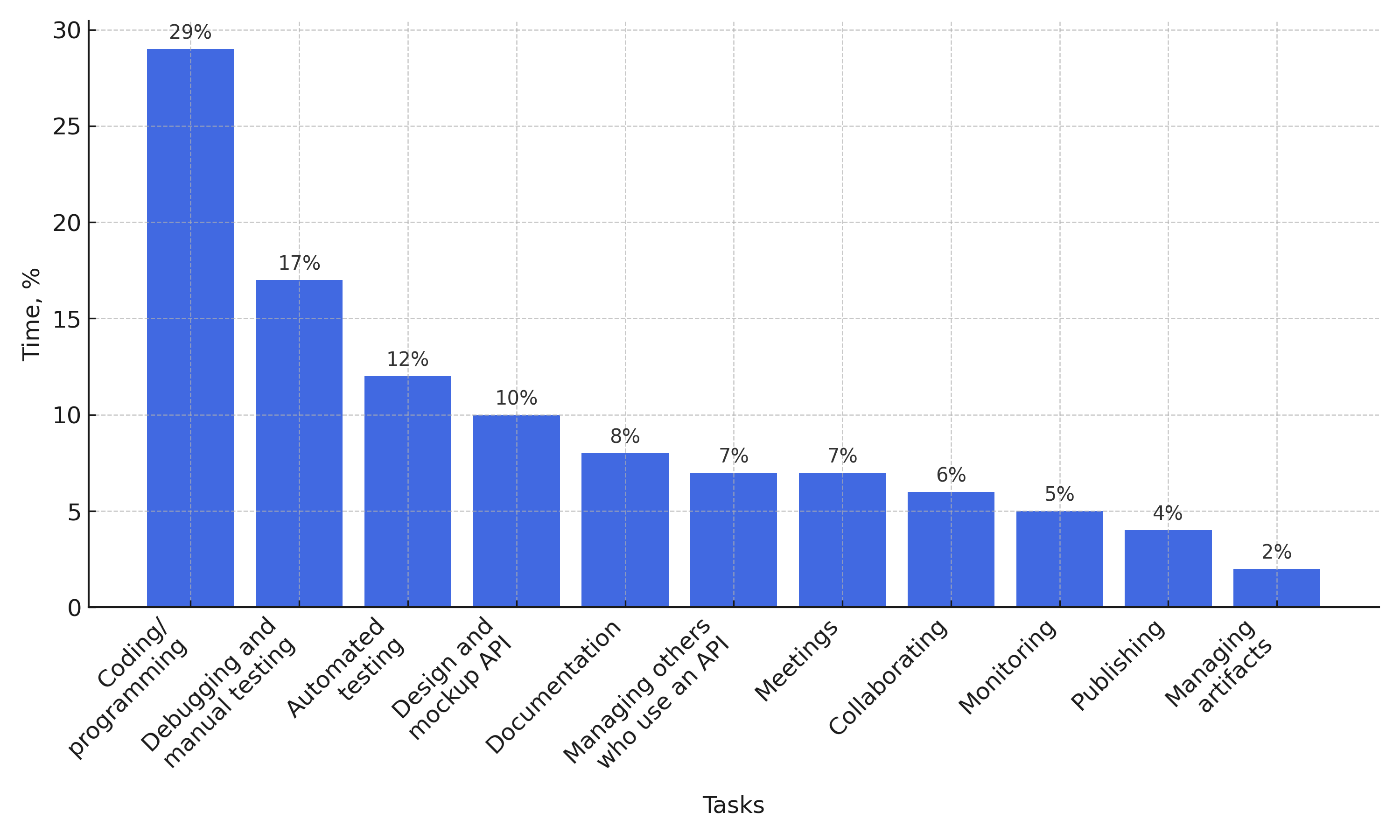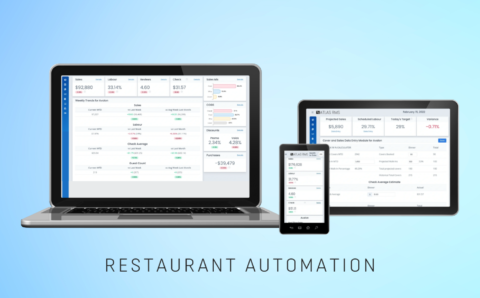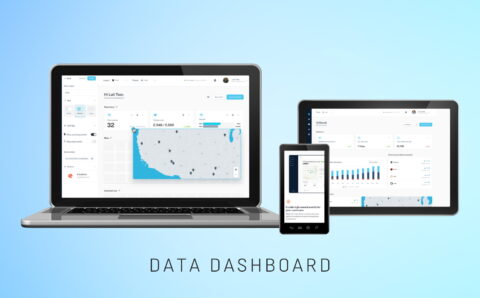
Dealing with an application programming interface (API) has become an essential part of many developers’ everyday work. It’s hard to imagine today’s web application development without using an application programming interface. According to the SlashData 19th Developer Economics survey, 89% of developers use an API at least in some capacity. In most cases, third-party application programming interfaces fully cover their needs, while 20% of these developers, however, use custom APIs developed to integrate different software systems.
While typical tasks like integrating a popular payment gateway into a widespread content management system (CMS) can be solved with a free public API, complex tasks involving custom-made systems may require building a unique application programming interface. The question is whether a small or medium-sized business can afford it. How much does it cost to develop an API?
Table of Contents:
Benefits of custom APIs
According to the definition, an API, also known as an application programming interface, is software that ensures data transfer between different solutions. In simple terms, it’s an intermediary between one app that requests specific information or conducts a certain functional request. The other digital product stores necessary data or can perform the requested function.
An API is a translator that processes the request of the former application using technical specifications describing the data exchange options through specified data delivery protocols like RPC, SOAP, REST, gRPC, or GraphQL and returns the required result using a built-in software interface. APIs allow developers to connect different existing systems with specific functions instead of creating a single overloaded solution with a typical set of functions from scratch. Developers can either integrate a third-party API or create one, depending on the required functionality. Custom API development is sometimes the only suitable option.
Drive Growth with Custom APIs
Learn how custom APIs can streamline your operations, enhance security, and open new revenue streams.
Security
You’re most likely to find an existing API offered by a third-party vendor to implement typical features. The SlashData survey shows that mapping, payments, and email integration are the most popular features implemented with third-party application programming interfaces used by 37%, 36%, and 34% of API developers respectively.
Unlike custom-made APIs, open-source solutions may rarely get updates and often become a target of hackers because such solutions may accept any token value, have weak encryption, no traffic limits, or no authorization. According to Statista, one in five API developers face a breakdown or change of their external API every month. Furthermore, over 90% of companies that used APIs had an API-related security incident in 2020. When integrating your own API, you minimize the attempts to explore the vulnerabilities of your solution and have the chance to control the implementation of all the security measures.
Flexibility
Modern APIs are often based either on REST or SOAP protocols. While the SOAP API supports the XML format, the REST API supports many different data formats, including XML and JSON.
REST is aimed at stateless operations, while SOAP is better suited for continued operations. When building your own API, you can choose a protocol you want to use depending on your needs. With third-party API integration, you don’t have such a choice.
Custom API solutions also include cloud API integration. Such APIs are essentially no different from other application interfaces and allow you to connect to cloud providers such as AWS or Microsoft Azure to create, deploy, and maintain your solution.
Cost Factors
The API development cost depends on a number of factors like a tech stack, functionality, etc. The main two factors, however, are developers’ hourly rates and time to be spent on the development and integration. To cut the costs, you can save your budget at least on one of these factors. But before proceeding to calculation, you answer yourself a list of questions. For a more precise estimation, you can use a calculator to determine the development costs based on specific factors like functionality, hourly rates, and timelines. This tool simplifies budgeting and helps visualize how different decisions affect the overall expenses.
Performance
Questions to Ask
Qualifying Questions
Performance is an important criterion for a server load and user experience. The more optimized your solution is, the faster your server processes a request and, as a result, the better experience your users get. The thing is, API optimization and implementing complex solutions focused on making your product faster will increase your budget. On the other hand, you can’t ignore API performance to minimize costs. You should set up adequate values that will satisfy your needs rather than waste your money on trying to reach the performance level you may not need.
Technologies
Questions to Ask
Questions to Ask
Choosing the right backend programming language, framework, and data delivery protocol is a vital decision you need to make before planning your API development costs. Easier said than done. In theory, you can freely pick between various frameworks like Node.JS, Ruby on Rails, or Laravel: all of them are suitable. For example, at PLANEKS, we prefer the Django REST framework, Flask, and FastAPI for API development services. FastAPI, for instance, is a Python-based web framework created specifically for creating APIs. One way or another, the chosen technology can significantly influence the cost of developing an API because of different development hourly rates. For instance, the average senior Ruby developer’s hourly rate in the U.S. is about $75 while a senior Python developer earns $70 per hour according to Talent.com.
Functionality
Questions to Ask
Questions to Ask
A list of required functions is one of the most important factors that impacts the cost of API development. The more complex the functionality is, the more work hours you will need to pay. Before even starting to calculate your budget, you should list all the required features. You also need to understand how API-related operations will run.
Type
Questions to Ask
Qualifying Questions
From the first point of view, no matter what type of API you are going to build, it should work smoothly and in a proper way. “Smoothly”, however, is an unclear term that cannot fully describe the quality of your code and documentation. Anyway, an application programming interface can still work even with a list of artifacts included. Although, the more users are supposed to integrate your API, the more responsibility you have. As a result, the cleaner your code and the more detailed your documentation should be.
Hourly Rate & Salary
Questions to Ask
Qualifying Tips
An expected deadline and API developer cost are the main factors you should keep in mind when calculating the overall expenses. If you did your best to optimize the workflow plan taking into account the required functionality, performance, quality, and technologies, an hourly rate is the last chance to save your money. To cut expenses on salaries and paychecks, you can either hire less-experienced developers or opt for offshoring.
API developer salary by Country
| Country | Salary per year |
| United States | $141,120 |
| Mexico | $50,400 |
| India | $60,480 |
| Germany | $120,960 |
Ready to Integrate Your Systems?
Get expert help with seamless API integration to streamline your business processes.
Time allocation on API development tasks, %

Once you clearly set up your requirements taking into consideration all the factors mentioned above, you will have a better picture of your timeline. For example, building a simple API aimed at reading data from databases like MongoDB, MySQL, and PostgreSQL and then returning a JSON-based response can take up to two weeks which will cost you $2,500-$5,000 when offshoring development and a minimum of $6,000 (but most likely around $10,000) when hiring U.S.-based API developers.
Compared to simple functions like “find id X and return its Y value”, a complex API that would work with a high-load service, access various databases, and have multiple endpoints can take months of development. For example, the development of an Uber API, which provides real-time updates on each ride taken on a company profile, allows ride requests integration into other services, uses driver performance data to transform it into convenient dashboards, etc., can take half a year. This can result in spending $50,000 or even more.
Our experience, however, shows that most application programming interface development projects take around 2-3 months, with an average cost of API development ranging from $10,000 to $25,000. No matter how complex your API has to be: from the simplest one to complex solutions, feel free to contact us, and we will be more than happy to assist you.

Upcomer
The go-to esports site, was upgraded by PLANEKS team to achieve faster load times and smoother operations, boosting overall user satisfaction.

Restaurant Management
Streamlined operations with a cloud system, centralizing point of sales, labor & inventory data into one dashboard, boosting restaurant profits.

Spontivly
Spontivly now supports 120+ integrations, enhancing workflow efficiency & providing insights across industries, improving operations.

